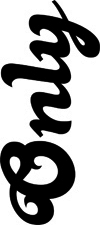only magazine
↵ home
Nick Pittman

By Asher Penn
Monday February 26, 2007
Nick Pittman is one of the most visible young artists working in Vancouver today. His paintings are instantly memorable due to their powerful psychadelic effects and iconic forms. He currently has a show with Trevor Larson at Lucky’s.
ONLY: I heard you used to do graffiti art. Were you a tag artist? Did you ever do hip-hop paintings?
Nick: Yeah, I did graffiti. But when it came time to start being out of high school and into the real world and I didn’t want to get into the real world. I didn’t want to keep being a criminal either, so I figured I’d find art school as the medium between the two. I never felt quite at home in the graffiti world. It’s an empowering activity for youth but as far as satisfying creative desires I felt held back.
ONLY: So was it at art school that you started applying that sensibility onto a canvas?
N: There came a point with graffiti that I felt I wanted to have the forms that were prescribed without having to adhere to letter forms and its relationship to the type word. The first logical step was to make a transition to abstraction. From there I deconstructed it, to synthesise something else that still had that wilder energy that was related to graffiti.
ONLY: There is this point in your older work that reminds me of the sprawl of a throw up, but the graphic ins and outs remind me of abstract expressionism. It’s like Jackson Pollock, with the no beginning/no end thing. Do you like Jackson Pollock?
N: I like Picasso more than Pollock.
ONLY: Really?
N: I think about the relationship of his themes, the sensual energy that was the main driving energy force with his work.
ONLY: Energy is a big part of your work.
N: Yeah, I guess it’s the idea of creating a field of energy. A place to deposit and share energies with an audience. Trying to find some different ways of doing that.
ONLY: One of my favorite things about your work is what separates you from so many artists your age: I find your work pretty humourless. [Nick laughs] You aren’t an abstract painter that is employing a motif that references an ideology of the past, using that irony to express himself or herself. The thing that I was curious about is whether you’re actually expressing yourself with your work?
N: Yeah, that’s a question I ask myself: if expression is possible, or even viable. I guess it’s a problem to work with and explore. I think of my work technically more than emotionally, but at the same time it is a way to deal with a Beuysian notion of dispersal and buildup. I think because of the temporal nature of making artwork, you get to situate yourself in these different moments. Right now these boomers are teaching us and the natural Oedipal relationship in this scenario is that you have to question the thing that’s right in front of you. We’re faced with these somewhat utilitarian social ideas that have absolutely forbidden a lot of what Grandpa said was okay… And Grandpa is looking like a semi-romantic artful kind of hip dude compared to you.
ONLY: I read somewhere that you were working towards finding a new color. Are you inventing or discovering? Is the new color the light at the end of the tunnel?
N: I think its kind of a literary them. One of those puzzles that kind of get you to imagine something that is impossible. I don’t know that I take it too seriously, but I do like the instances where I can at least pretend that it does happen.
ONLY: One of my first reactions of your work was that it reminded me of colour separation. You know, CMYK. How important is it that your work is a painting? How do you feel about photographic reproductions of your work?
N: Its one of those things that I try to think about but I haven’t had a chance to express. The idea that a print has a relationship to painting, but it’s kind of exploded: it’s an exploded version of the dot matrix. It ultimately speaks to the hand, but with a relationship to mass reproduction. Printing is ultimately related to painting. These could be mass-produced and it wouldn’t really detract from the effect. I think that the idea of eventually trying to work with a printing press is something I would like to do.
ONLY: Kinda like Chuck Close.
N: In a wheelchair?
ONLY: No, Chuck Close got to this point in his work where he basically employed every printmaker in New York City, from daguerreotypes to silkscreen and lithographs.
N: Yeah I like the idea of disseminating and infiltrating craft. Right now it’s just a focus on developing my vocabulary and finding the right forms.
